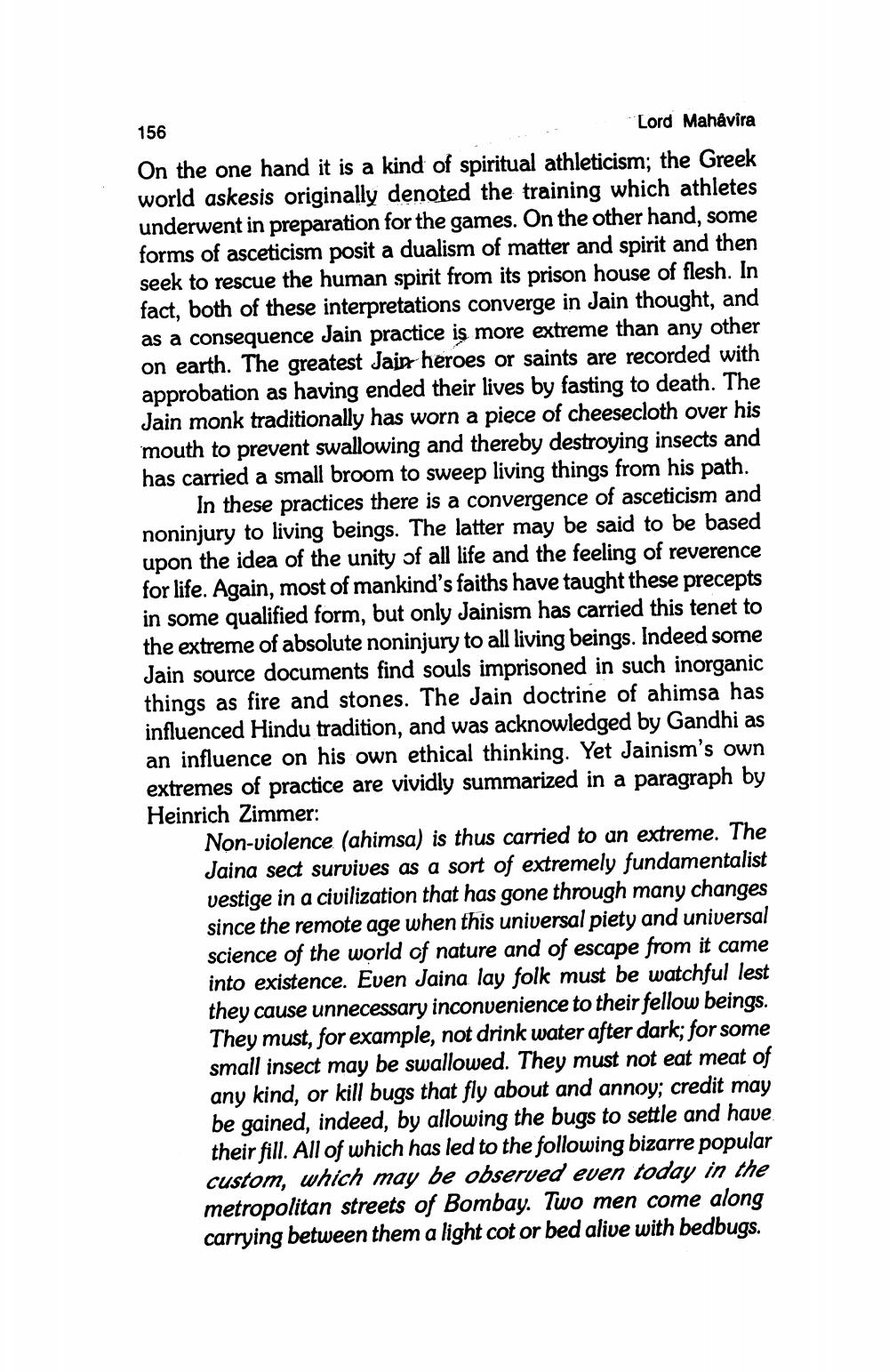________________
156
Lord Mahavira On the one hand it is a kind of spiritual athleticism; the Greek world askesis originally denoted the training which athletes underwent in preparation for the games. On the other hand, some forms of asceticism posit a dualism of matter and spirit and then seek to rescue the human spirit from its prison house of flesh. In fact, both of these interpretations converge in Jain thought, and as a consequence Jain practice is more extreme than any other on earth. The greatest Jain heroes or saints are recorded with approbation as having ended their lives by fasting to death. The Jain monk traditionally has worn a piece of cheesecloth over his mouth to prevent swallowing and thereby destroying insects and has carried a small broom to sweep living things from his path.
In these practices there is a convergence of asceticism and noninjury to living beings. The latter may be said to be based upon the idea of the unity of all life and the feeling of reverence for life. Again, most of mankind's faiths have taught these precepts in some qualified form, but only Jainism has carried this tenet to the extreme of absolute noninjury to all living beings. Indeed some Jain source documents find souls imprisoned in such inorganic things as fire and stones. The Jain doctrine of ahimsa has influenced Hindu tradition, and was acknowledged by Gandhi as an influence on his own ethical thinking. Yet Jainism's own extremes of practice are vividly summarized in a paragraph by Heinrich Zimmer:
Non-violence (ahimsa) is thus carried to an extreme. The Jaina sect survives as a sort of extremely fundamentalist vestige in a civilization that has gone through many changes since the remote age when this universal piety and universal science of the world of nature and of escape from it came into existence. Even Jaina lay folk must be watchful lest they cause unnecessary inconvenience to their fellow beings. They must, for example, not drink water after dark; for some small insect may be swallowed. They must not eat meat of any kind, or kill bugs that fly about and annoy; credit may be gained, indeed, by allowing the bugs to settle and have their fill. All of which has led to the following bizarre popular custom, which may be observed even today in the metropolitan streets of Bombay. Two men come along carrying between them a light cot or bed alive with bedbugs.




